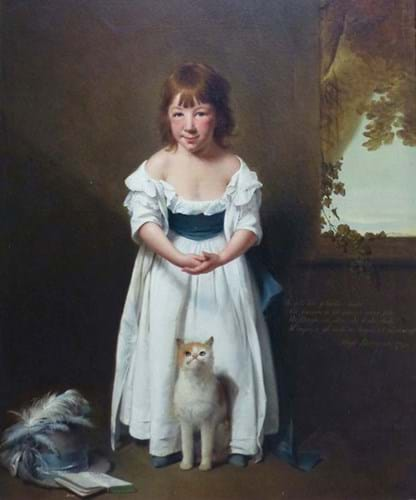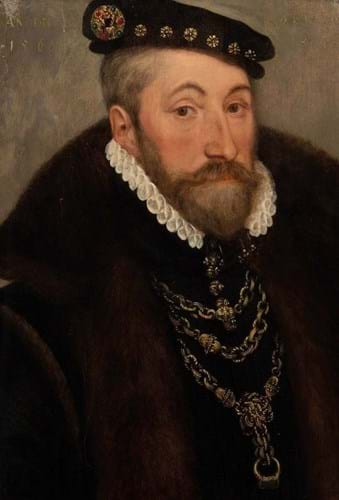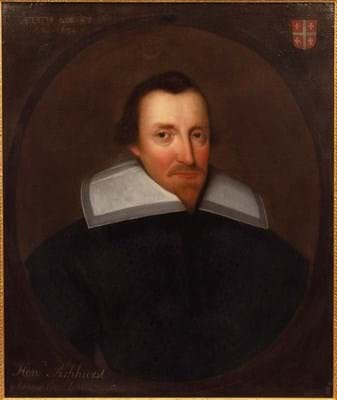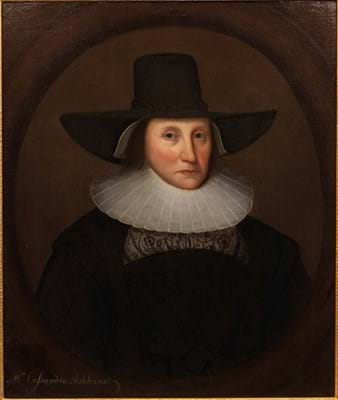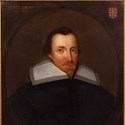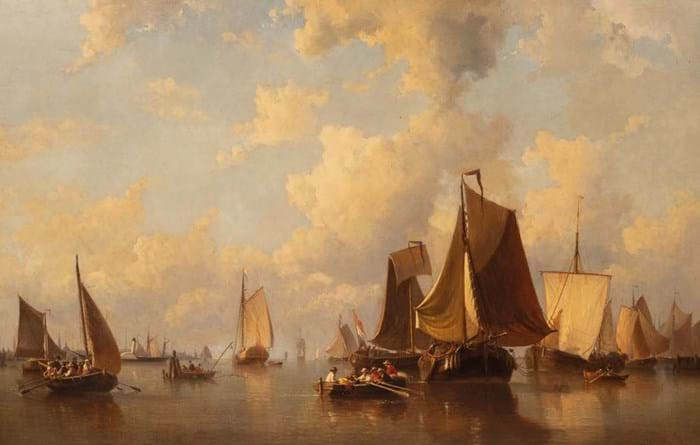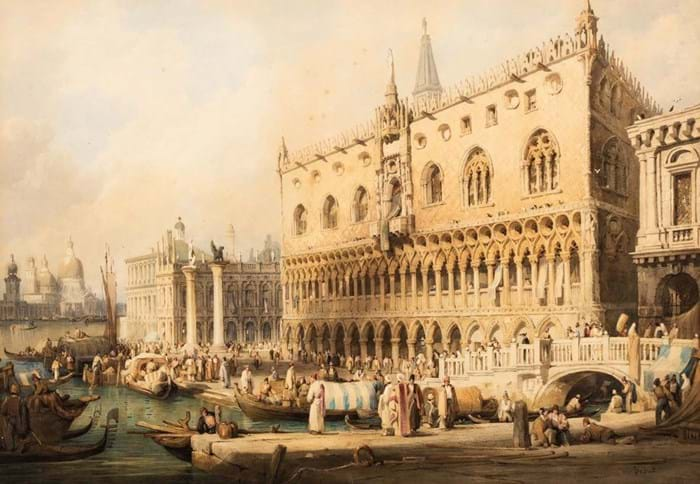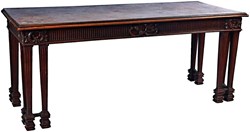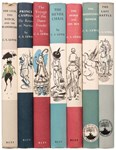It was a picture of a child with a cat by Joseph Wright of Derby (1734-97).
Works by the artist are seldom seen at auctions outside London and portraits of children are even rarer, even though they form a recognised part of his oeuvre and often proved lucrative commissions from well-heeled members of the Midlands gentry.
The 4ft 2in x 3ft 4in (1.28 x 1.02m) oil on canvas depicted Richard Sacheverell Bateman (b.1788), the only son of Sir Hugh Bateman of Hartington Hall in Derbyshire.
The sitter had a tragically short life, having died before the age of seven of unspecified causes, most likely after catching an illness. The fact that he is shown ‘shortcoated’ (wearing children’s clothes that were interchangeable between the sexes prior to a boy’s ‘breeching’) underlines his young age.
An inscription seemingly at his father’s behest appears to the centre right: a lament written in Italian about ‘a silence, a horror that fills me with high sorrow’.
Joe Smith, who founded the Banbury auction firm back in 1993, said there was some suggestion therefore that this may have been a posthumous portrait.
He added that the presence of the cat in particular, as well as the two other mementos of the boy – the hat and the book to the lower section – made it a distinctively more attractive commercial proposition, something no doubt bolstered by its market freshness.
While dogs feature commonly in 18th century formal portraiture, cats are significantly rarer, especially ones with the feline pictured so centrally. The animal’s content expression may well have also proved alluring to potential buyers.
Although not a well-exhibited picture, it was known to scholars having appeared in a Benedict Nicolson’s 1968 publication Joseph Wright of Derby: Painter of Light.
While Hartington Hall was sold in the early 20th century (the house is now a youth hostel), the portrait remained with the family and was passed down through the female line.
The descendants, who still live in the vicinity, have sold a number of lots with JS Fine Art over the years and initially consigned this portrait to the Banbury saleroom four years ago, although later withdrew it. But having reached an agreement with other family members to split the proceeds, it finally appeared at the sale on January 27-29.
Housed in a period giltwood frame, it was in good original condition with no restoration or relining.
While JS Fine Art does not publish estimates, Smith said he was hoping for at least £50,000 before the sale. After receiving solid interest beforehand, a number of commission and online bidders were seen off by two dealers on the day who took the price up quickly before it was knocked down at £75,000. The buyer was a member of the London trade.
The price was seemingly the second highest for Wright of Derby sold at an auction outside London – only a landscape with a rainbow that made £135,000 at Bellmans in West Sussex in 2013 has registered more.
In terms of child portraits by the artist, a handful have exceeded this sum, the uppermost being Study of a boy reading that fetched £260,000 at Sotheby’s in 2010.
Main attraction
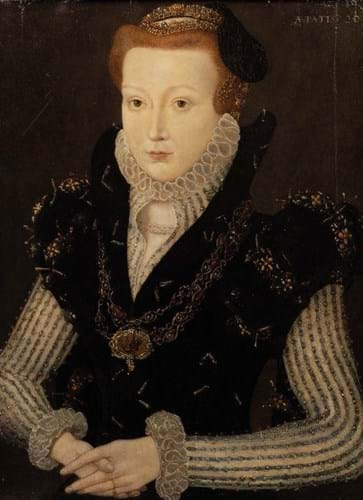
Portrait of a lady catalogued as ‘attributed to the Master of the Countess of Warwick’ – £25,000 at Chorley’s.
Another sale where historical portraits were among the main draws was the Fine Art and Antiques sale at Chorley’s (22.5% buyer’s premium) in Cheltenham, Gloucestershire, on January 25.
A group of nine works, eight of them portraits, came from the collection of Harry Wolton, a lawyer and QC based in the Cotswolds who bought mainly in the 1980s-90s. With only one unsold, the lots raised a combined £51,800 hammer total.
The leading light was a portrait of an elegant Tudor lady which had been bought at Christie’s back in 1981 for £1300 (it had also sold at the London auction house back in 1921). In terms of style and subject, the 22¾ x 17½in (58 x 44.25cm) oil on panel was very much in keeping with the works identified as by the artist known as the Master of the Countess of Warwick (fl.1560-70) – a painter seemingly close to Flemish painter Hans Eworth (c.1520-74). His name is taken from the portrait of Anne Russell, Countess of Warwick, at Woburn Abbey, Bedfordshire.
The enigmatic artist became recognised only in 1967 when Sir Roy Strong identified eight paintings by his hand – all portraits of women finely dressed in ornately embroidered attire and shown with clasped hands. Now the number of attributed works to ‘the Master’ exceeds 50 and the picture in Cheltenham was believed to be one of their number.
Catalogued as ‘attributed to the Master of the Countess of Warwick’, it was pitched at £20,000-30,000 – a level possibly derived from the £20,000 hammer price for a similar portrait of a different lady also attributed to the artist that had sold at Christie’s in July 2012.
Here the picture drew decent interest and it sold at £25,000 to a UK private buyer.
One dealer told ATG that the work was ‘quite possibly’ by the Master but felt it the condition of the work was more problematic. It was in fact painted across three panels with one showing signs of shrinkage and one of joins visible on the surface. The painting had also undergone cleaning, re-varnishing and other restoration including some overpainting and the panels being cradled.
From the same source and also selling within estimate was a portrait of a nobleman that was pitched at £10,000-15,000 and sold to the UK trade at £12,000.
Offered as ‘English School, 16th century’, the auction house suggested Sir Henry Bedingfeld of Oxburgh Hall, Norfolk, as a candidate for the sitter. The catalogue notes also said that it work ‘could possibly be attributed to Steven van der Meulen (fl. c.1543-63)’, citing a reference suggesting this in Strong’s The English Icon.
Indeed a painting of Bedingfeld, a privy councillor to Edward VI and Mary I, by a prominent artist in the Tudor court like van der Meulen would be a valuable proposition, but here again there were some significant condition issues. The 18 x 12¼in (45.5 x 31cm) painting had been re-laid on a modern wood panel and had two small splits as well as blisters and a little chipping in places.
A further lot from the Wolton collection that also sold to the trade was a pair of paintings depicting a husband and wife and dated 1634.
Rather more austere than other portraits in the group, the sitters Henry and Cassandra Ashurst were from a family of prominent Parliamentarians from Lancashire. The family had a long history even before Henry’s father (also called Henry) became a successful merchant and was appointed a justice of the peace. He was also an important benefactor of charitable and religious causes, remaining staunchly protestant in a part of the country where his neighbours were catholic.
His son, the Henry pictured in this portrait, had moved to London and became a wealthy draper and alderman but, seemingly, remained loyal to his roots. The family coat of arms appeared to the top right of the portrait here.
Again, the condition of both the 2ft 6in x 2ft (75 x 62cm) oil on canvas works was not ideal with large areas of overpaint to both portraits. However, estimated at £4000-6000, they did draw interest and got away at £4800.
Elsewhere at the sale, a couple of 19th century works brought demand although they would likely have made more if they had been in better condition.
Harbour scene
A Dutch harbour scene by Everhardus Koster (1817-92) depicting fishing boats, rowing boats and a paddle-steamer with a town in the distance was a typical example of the works by the The Hague-born artist.
His paintings appear regularly on the market and this picture had an attractive evening haze as well as a good size with the oil on canvas measuring 3ft x 4ft 7in (91cm x 1.4m). The picture, though, had been relined and cleaned around 30 years ago but had seemingly since gathered some fly spots and discoloured varnish.
Estimated at £3000-4000, it took £6500 – a reasonable price even if the artist can make five figures on occasion.
A view of the Doge’s Palace in Venice by Samuel Prout (1783-1852) also generated good interest against a £2500-3500 pitch. A detailed picture with numerous figures and gondolas, as well as landmarks such Punta della Dogana and Santa Maria della Salute in the distance, the signed watercolour and bodycolour heightened with white was also a decent size, measuring 20in x 2ft 4in (51 x 72cm).
The artist made a name for himself painting Romantic scenes of European cities for Victorian audiences which often appeared as engravings in illustrated books. Indeed, this finely executed example was the kind of work that demonstrated why the Plymouthborn artist was greatly admired by Ruskin.
Despite some slight fading, it brought a good bidding competition and was knocked down at £5500, one of the highest prices at auction in the last few years even if his auction record remains much higher – the £24,000 for another view of the Doge’s Palace sold at Sotheby’s back in November 2000.


